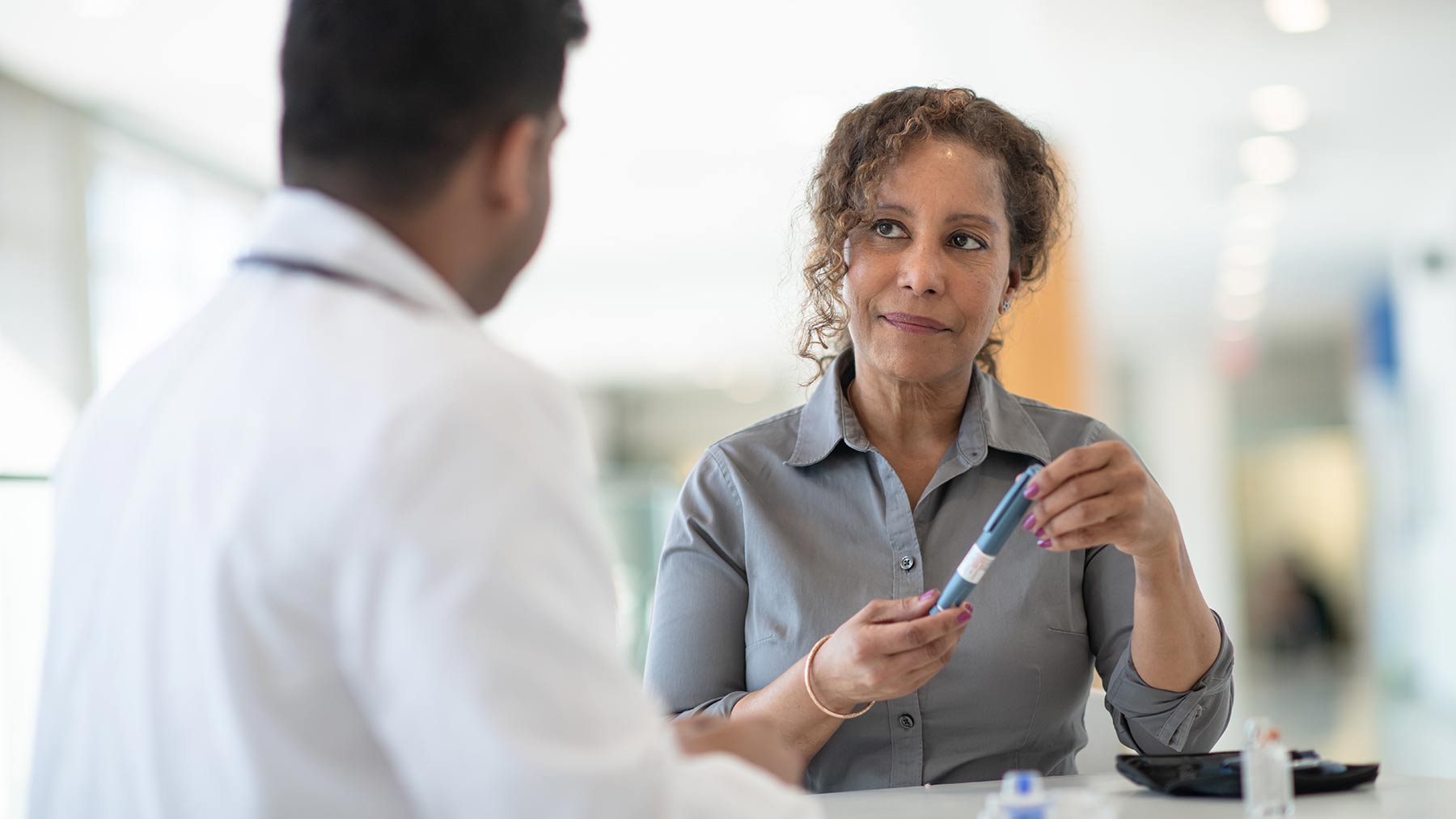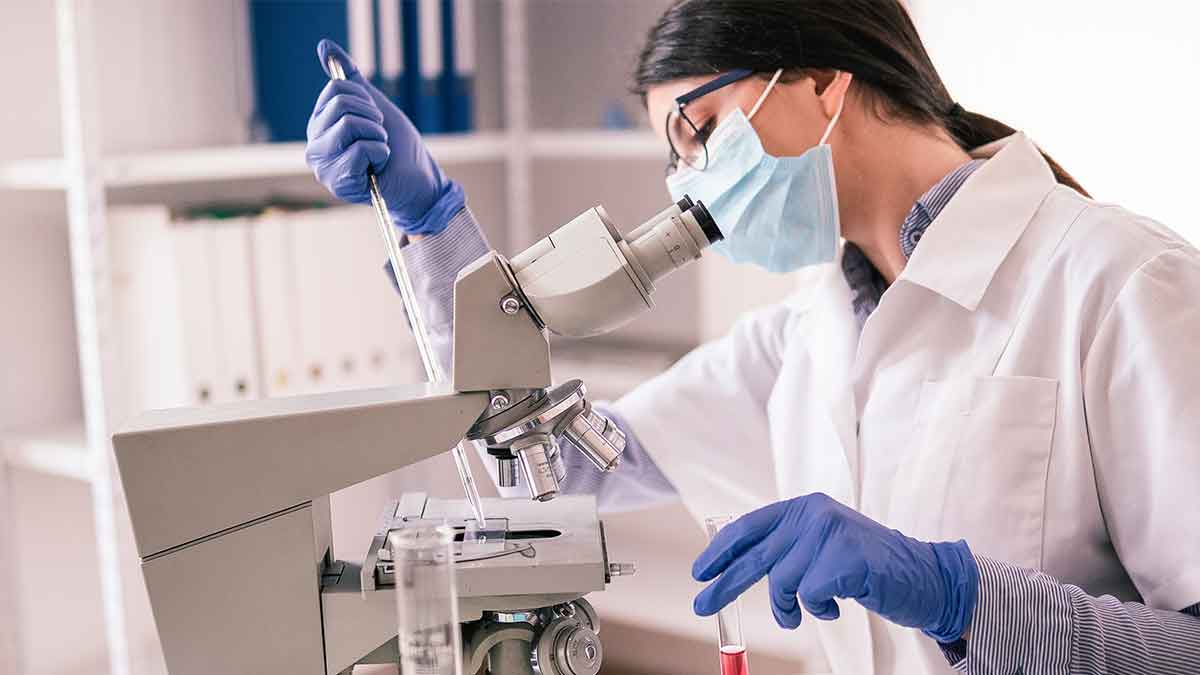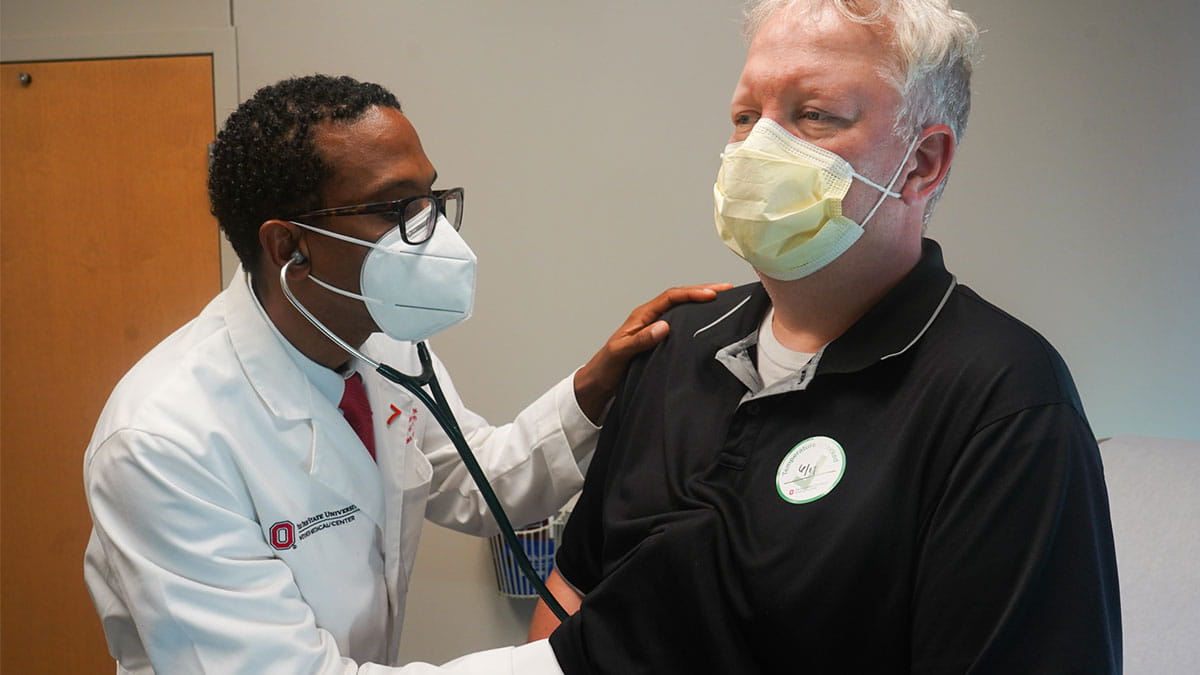Why are people developing diabetes after having COVID-19?

For some people, surviving COVID-19 may lead to lasting medical concerns, including newly diagnosed diabetes. This is a chronic disease that happens when your blood glucose, also called blood sugar, is too high.
The pancreas makes insulin, which is a hormone that helps glucose get into your cells to be used for energy. But when your body doesn’t make enough—or any—insulin (Type 1 diabetes), or doesn’t use insulin well (Type 2 diabetes), then glucose then stays in your blood and can cause health problems.
In November 2020, a global analysis published in the journal Diabetes, Obesity and Metabolism found that up to 14.4% of people who were hospitalized with severe COVID-19 also developed diabetes. But why?
The real question is whether there’s an association to the viral infection, or if the coronavirus illness simply brought out the diabetes sooner than it would have otherwise been identified.
What does the data say?
I’ve not yet seen any data that there’s an inherent property of this virus to directly impact pancreatic beta-cells responsible for producing insulin the body needs to process glucose. The response of these patients to insulin therapy doesn’t suggest such a mechanism.
Please keep in mind that 90% of the 88 million with prediabetes don’t know that they have prediabetes, even though this is the group at highest risk of immediate progression to being diagnosed with Type 2 diabetes.
Additionally, 25% of the 34 million with diabetes aren’t yet diagnosed, according to the most recent data in 2018 from the Centers for Disease Control & Prevention.
What causes diabetes?
People at risk for Type 2 diabetes have an impaired relationship between insulin production and insulin resistance that’s already present at birth. However, this relationship can be functional and maintain glucose levels in the normal range for up to 70+ years, as long as nothing pushes it out of balance.
The primary stressors that can upset that delicate balance are diet (both absolute calories and the amount and type of fat), weight and lack of physical exercise.
Acute stressors such as pregnancy, steroids or inflammation from cytokine activation often seen in COVID-19 patients can bring out hyperglycemia in someone not known to have diabetes/prediabetes.
These acute stressors are like a “treadmill test for the pancreas,” and the pancreas fails.
The pancreas that’s at risk of Type 2 diabetes isn’t able to acutely increase insulin production in response to these acute stressors, thus glucose rises.
In fact, this is a warning sign that the pancreas doesn’t have enough reserve to handle the stress, and is at risk for progression to hyperglycemia and diagnosis of Type 2 diabetes in the near future.
Unfortunately, we have a history of calling this (respectively) gestational diabetes, steroid-induced diabetes or stress hyperglycemia because the glucose often appears to go back to normal after the acute stressor is resolved.
How could COVID-19 bring out Type 1 diabetes?
Epidemiologic data showed many years ago that Type 1 diabetes is most commonly diagnosed after an acute illness, such as a viral gastroenteritis or influenza. We’ve learned that this prior illness causes the body’s immune system to increase production of all antibodies, including the pre-existing ones such as those directed at the islet cells of the pancreas that produce insulin.
This immune system attack leads to a sudden loss of insulin-producing beta cells, causing acute hyperglycemia, also known as high blood sugar level.
Once the immune system activation subsides as the acute illness resolves, the pancreas may resume making some insulin. When this happens, the person experiences a “honeymoon phase” in which glucose-regulation isn’t normal, but the insulin deficit isn’t absolute, and minimal doses of insulin are needed.
This honeymoon period can last from 1-10 years in adults and, often, will end suddenly, resulting in the need for daily doses of insulin. The honeymoon period occurs because there are still a few insulin-producing cells that the autoimmune process needs more time to destroy.
How could COVID-19 bring out Type 2 diabetes?
Here are three scenarios that could explain why someone may be diagnosed with Type 2 diabetes after surviving a bout with COVID-19.
- The person has the disease, but it hasn’t yet been diagnosed.
- The person may have prediabetes, and the acute inflammation and/or steroid treatment finally pushed them into having diabetes. For example, the acute stressor increased their insulin resistance enough that the relative deficiency of insulin production was revealed, and glucose went above the normal level.
- The person may have been genetically at risk with mild stressors such as being overweight (not obese) and mildly but not completely sedentary. But then the combination of the insulin resistance from the acute infection and the high-dose steroids used to treat COVID-19 were such that a significant increase in production of insulin was required to keep glucose normal, and the pancreas just wasn’t able to increase its output to that level.
However, we know that in these three scenarios the majority of patients still have “prediabetes” six months later, and will likely progress to being diagnosed with Type 2 diabetes within five years. In addition, most, if not all, will be formally diagnosed with diabetes in their lifetime.
If you’ve had COVID-19, what are warning signs you may have developed diabetes?
- Frequent urination. This may include waking up at night to urinate and/or increased frequency during the day.
- Increased thirst with blurry vision.
- Inability to regain the weight lost while acutely ill.
- Slow wound healing.
- Fatigue. This one is tough because most people with COVID have fatigue for a prolonged period of time after the acute illness.
What can you do to prevent diabetes after COVID-19?
Focus on losing 15 pounds. Based on the data from populations with prediabetes, we know this can significantly slow the progression to Type 2 diabetes. Losing more weight can also help, but those first 15 pounds are the most important.
But, if you’ve lost a lot of weight during the acute illness, your goal should be to regain muscle but not regain all of the total amount of weight lost. A reasonable target is to shoot for a Body Mass Index (BMI) below 25, or 23 if Asian ancestry.
Establish a regular exercise program. This will help maintain insulin sensitivity and body weight and slow the progression to Type 2 diabetes. This exercise can be as simple as daily walking.
Evaluate your pre-COVID diet. Start by making some small changes to keep weight off or lose weight, such as switching sugared beverages to sugar-free beverages or water.
Have your primary care physician formally test for diabetes at your first post-discharge visit. Ask to be tested again six months post-discharge and then annually.
Why is it important to seek medical help for diabetes?
Uncontrolled hyperglycemia (high blood sugar) damages blood vessels and nerves throughout the body, which can damage the eyes, kidneys and heart, along with the loss of sensation in feet that’s associated with amputations. Hyperglycemia is also associated with fat accumulation in the liver and in muscle, leading to fatty liver disease and heart failure.
These effects of hyperglycemia are often present at diagnosis of diabetes. However, we know that it takes at least five years of hyperglycemia to begin to develop these complications, so anyone whose blood sugar levels aren’t normal after their COVID-19 illness probably has already begun to develop these complications. Intensive glucose control initiated early in the disease process can significantly increase the time to onset or progression of these complications.
We need to be careful to use the COVID-19-related hyperglycemia as a warning sign that Type 2 diabetes is going to happen in a person’s lifetime, but that they have a chance to take action to slow or delay the progression to hyperglycemia that meets criteria for the diagnosis.
Patients can use this warning sign to delay the diagnosis of diabetes for many years if they make appropriate adjustments to overall lifestyle.
Kathleen Wyne is an endocrinologist at The Ohio State University Wexner Medical Center and a professor at The Ohio State University College of Medicine. Wyne is also a Fellow of the American College of Endocrinology.




